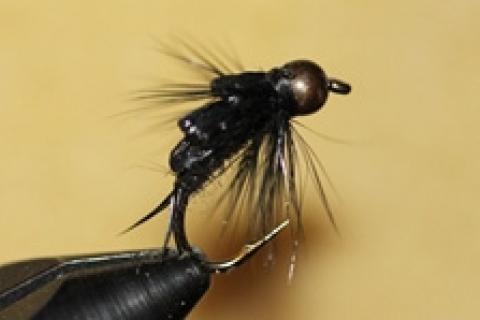
 Standing on the banks of the Brule River this weekend I noticed the first signs of life rising off the water. Stoneflies are the earliest significant hatches fly anglers will see every spring and one of the first real opportunities fly anglers get to match what is on the water. The results can be incredible if you get it just right.
Standing on the banks of the Brule River this weekend I noticed the first signs of life rising off the water. Stoneflies are the earliest significant hatches fly anglers will see every spring and one of the first real opportunities fly anglers get to match what is on the water. The results can be incredible if you get it just right.
The early brown stonefly hatch is one of the earliest hatches on Wisconsin waters where fly anglers will be able to see fish rising. This top water activity will not be heavy or steady like you are normally used but keeping a keen eye on the water will catch a fish secretly feeding. During peak sun hours (around noon to 2 p.m.) trout will feed on these stones as they are hatching or when they return to the water. Typically the early brown stonefly hatch occurs mid-March and well into April depending on the mid day temperatures, snow accumulations and stream location.
In general when the conditions and temperatures are just right early brown stonefly nymphs will crawl out of the water onto the banks or rocks so that they can shed their nymphal case. This process starts in the early part of the morning and runs into the warmest part of the day. After the nymphs have shed their cases they will dry their wings and go for their first flight. It is when these stoneflies come back to the water that the real excitement starts for fly anglers. As stoneflies lay their eggs on the water they flutter and skate across the surface. This actively can stir even the most lackadaisical of trout.
If you start to see nymphs on the shoreline or rocks try using small black stonefly nymph patterns along with a strike indicator. Patterns like the Prince Nymph, Zug Bug the Copper John are always great producers.
Fish these patterns with an upstream and across technique, dead drifting the nymphs past your position. Set the hook any time you see you indicator stop, bob or pull as it drifts.
If you see good numbers of flies in flight over the water or actually see a fish feed on the surface try using dark colored Elk Hair Caddis, Humpty's or Madam X Flies. To fish these dry fly patterns you have to have patience. It will take several runs over where you think a fish might be laying to draw it up to the surface. Fish slow and be precise on your casts. Try dead drifting these flies and swinging them over fishy looking runs.
The Wisconsin early season is a great chance to experience this wonderful early season stonefly hatch. Watch the weather, plan you trips for the peak times of the day and enjoy the fight of a spring trout.
- 2977 views

